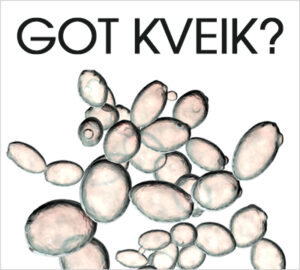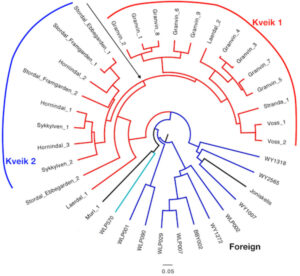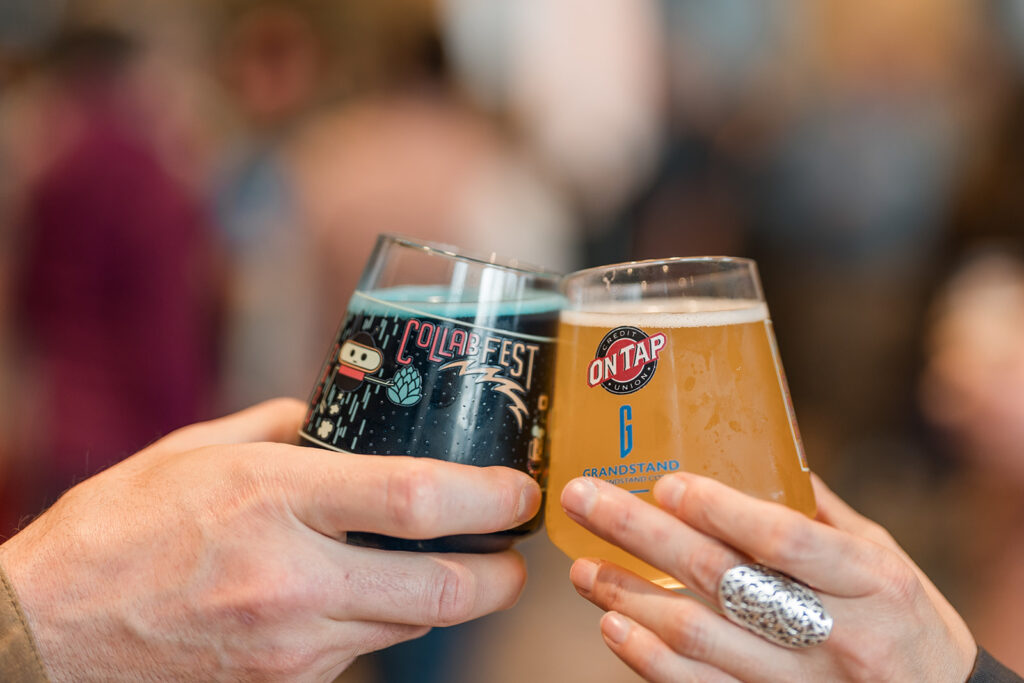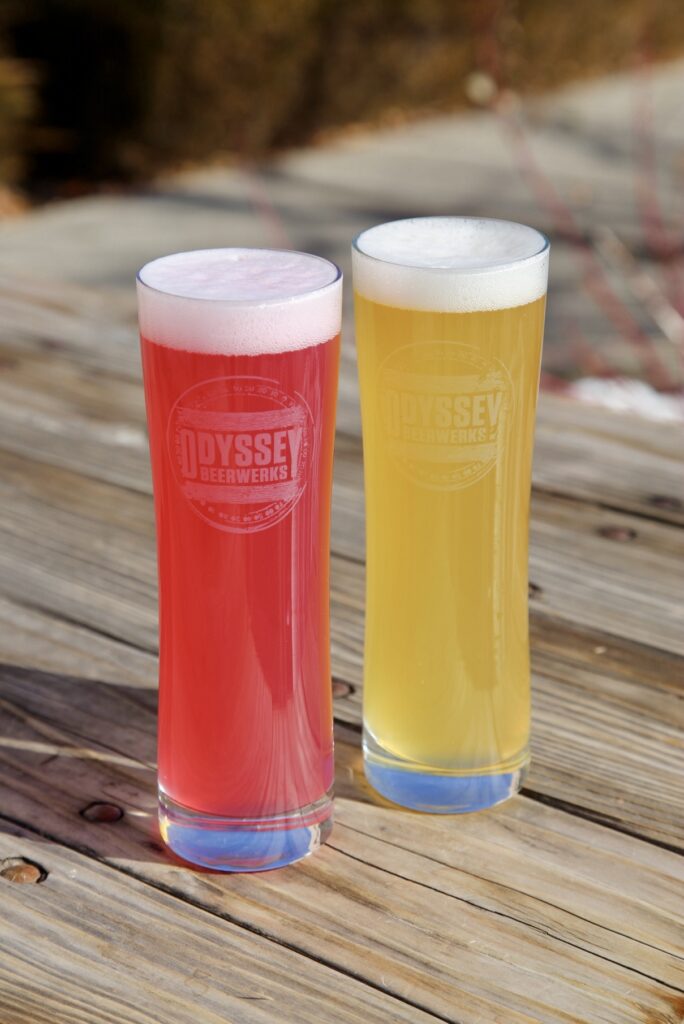Written by Matthew Peetz (Propagate Lab) and Dr. Ethan Tsai.
While we obviously recommend checking out the recorded webinar that we provided for the CBG Summit, it’s understandable that the sound of our voices might bother some people. For that, we apologize for Ethan’s terrible delivery and countenance.
Readers should consider this a companion piece – akin to a white paper that distills the webinar in an easier to digest format. While this covers our experiences and the best practices that we have developed over the years of handling and brewing with this unique set of yeasts, this should by no means be considered the end-all-be-all for usage of these incredibly interesting yeast strains.
This is broken down into two major sections: (1) history & basic biology, (2) basic application.
Skip to whichever you feel is better suited for your needs, although we believe that a fundamental understanding of the basics of the history and biology of the yeast is incredibly helpful in understanding the applicability of the yeast strains to modern brewing and the development of unique takes on traditional styles.
History
Kveik means “yeast” in a specific Norwegian dialect, it is pronounced “kwike” and not “K-Vik”. It has become a catch all term for a number of strains that are used in traditional Scandinavian brewing. Far from being a monolith, these strains were used in a number of different ways to produces a multitude of indigenous beer styles.
However, there are a few common threads in these styles. The first, they are fermented at a very warm temperature, upwards of 100 F. Second, they generally have a high starting gravity resulting in high osmotic stress for the yeast. Third, they are fermented quickly and reach terminal gravity in a very short amount of time. It is these characteristics, high fermentation temp, high stress tolerance, and quick fermentation that make them of particular interest for modern brewers.
For more information on traditional styles of beer that would have used these strains check out this great article from the Brewers Association.
Genetics
Kveik strains appear to be their only “branch” of the yeast family tree, meaning that they all share a recent common ancestor and are closely related to one another. The strains all share several adaptations that allow them to ferment beer at a high temperature, ferment quickly, and with very little byproduct formation. First, yeast have upregulated maltose genes (MAL31, 32, 33) and are able to utilize maltose at a faster rate than most ale yeast. Second, they are more alcohol tolerant than many strains and are able to comfortably ferment into the 13-16% ABV range. Third, while most domesticated yeast strains have a mutation in one of the two Phenolic Off Flavor genes (POF+), kveik yeast strains have a mutation in both genes and do not produce any phenols.
What is most interesting about these strains is that even with elevated stress from a high fermentation temperature they produce very few aromatic compounds. When compared to typical clean brewer’s yeast (US-05, WLP-001, Wyeast 1056), they produce fewer esters under the same fermentation conditions. In a trial conducted by Escarpment labs they found that only three esters were produced above threshold levels. These three esters, ethyl caprylate (tropical fruit), ethyl decanoate (red apple), and ethyl caproate (pineapple), combine to create a tropical fruity aroma. {Preiss, R., Tyrawa, C., Krogerus, K., Garshol, L. M., and Van Der Merwe, G. (2018). Traditional Norwegian Kveik are a Genetically Distinct Group of Domesticated Saccharomyces cerevisiae Brewing Yeasts. Front. Microbiol. 9, 2137.}
Application
At first glance these strains may appear to be a novelty, however, we have identified a number of useful roles they can play in the brew house.
- Increased production via a shortened fermentation time. Kveik beers cans be produced in 7-10 days, if the average ale yeast takes 14+ days and the average lager takes 21+ days, a brewery can increase their production capacity without additional equipment.
- Decreased utility and equipment demand through increased fermentation temperature. Kveik strains ferment in the 85-100 °F range. This allows for the use of unjacketed tanks and less demand on chillers.
- Co-Pitching with lactobacillus to produce quick “kettle” sours. Lactobacillus and Kveik have similar fermentation temperatures, they can be successfully co-pitched in a fermenter to quickly sour and ferment at the same time. A brewer can produce a beer that is at a pH of 3.3-3.5 with 70-80% attenuation in 48 hours. It is strongly recommended to use a healthy lab pitch of lactobacillus so that the Kveik does not out compete it.
- Hop forward beers with less sought-after hop varietals. Kveik yeast appear to utilize hops via their squalene synthase and ERG9 / ERG11 pathways to produce sterols. During this process hop compounds are “bio-transformed” into new aroma and flavor components. (“Isolation and primary structure of the ERG9 gene of Saccharomyces cerevisiae encoding squalene synthetase.”Fegueur M., Richard L., Charles A.D., Karst F. Genet. 20:365-372(1991))
First and foremost, it’s important to consider kveik as a separate and distinct set of strains that provide a novel take on much of the yeast behavior we know and love. What kveik is not is a simple plug-and-play system that will simply allow us to make beer exactly the same way as before, with exactly the same properties, with the exact same overall impact.
Kveik can get us most of the way there, but without a good understanding of the subtle differences that may arise, there’s a huge risk of making a beer that is only 95% identical. Why is that a risk? Often times that last 5% is more punishing than if it were 50% different. The psychology of the uncanny valley[1] can have a massive effect in these cases; and this isn’t an unfamiliar concept for us as brewers. The reason we see good, clean lagers as a hallmark of skill is because we know that without getting 100% of the way to a great lager, each fault becomes magnified the closer you get. The cleaner the beer, the easier it becomes to find even the slightest faults. Even slight problems become magnified in the presence of what is otherwise a beautifully clean beer. And while this might not be a problem in the case of unknowing or less sophisticated drinkers, it is a better question of whether a brewer would be satisfied with only getting it “most of the way,” rather than “100% correct.”
Another way of thinking of this problem is buying an incredible luxury supercar (think Ferrari California[2], McLaren P1[3], Maserati MC20[4], etc.) with the money you have been saving for years. You’ve spent your hard earned and saved riches buying what should be an outrageous piece of engineering, dressed to perfection in matte carbon, vibrant colorway, and luxurious Venetian leather. Unfortunately, upon arriving at home, there is a small scratch on the hood that you probably missed in the glare of the midday sun. It doesn’t seem to buff out, but hey, small scratch right? In truth, you will likely still love the car, but your enthusiasm and passion will likely be dampened by the fact that there is a scratch there. It may be a small one, but the fact alone that there is an errant scratch that is on the hood will cause significant stress for you. You bought an incredible supercar, but it’s just that much less (even if it is tiny) super. Worse yet, you will always know where it is and see it every time to look at your car.
Such as it is with brewing kveik and expecting the exact replica of some styles you were trying to brew. Kveik can be an outstanding imitator, but it is at its best when used less to emulate, and more to be creative. Think less “stormtroopers,” (instead of clones of Jango Fett[5]), and more “
It might be easiest to break down the application of kveik into the major components we tend to care about in our beer: mouthfeel/body, aroma/flavor, speed of ferment. Kveik is fairly novel with respect to each of these three aspects of beer, and it’s easiest to address them separate.
Mouthfeel & Body
The mouthfeel (the tactile sensation of the beer) and body (closely related to viscosity) of a beer is a function of the multitude of chemicals in the beer. It’s a good reflection of the alcohol (alcohol tends to thin out both body and mouthfeel), sugars and protein (both boost body and lead to a heavier mouthfeel), and many secondary compounds that are both derivatives and non-derivatives of yeast metabolism. Diacetyl can increase the mouthfeel and body of a beer, but primarily leads to a slickness in mouthfeel that is undesirable. Glycerol from yeast metabolism can lead to a softness and fullness in the mouthfeel, without much change in the body of the beer. Powerful esters can thin out the body and give the impression of a very astringent, thin mouthfeel (many esters are used as industrial solvents after all).
As brewers, we tend to value a big body (higher viscosity) and richer (heavier) mouthfeel in big and bold beers, such as barleywines and stouts (and even some “malt-bomb” DIPAs) – and we tend to throw in unfermentable sugars (lactose!), or dextrin-heavy grain (oats and wheat!) to accomplish this. As a result we get those beers that are fireside warming brews, as opposed to something we expect to drink on a lawnmower, in the shower, or out of massive steins. Alternately, we add in fermentable sugars to create alcohol unencumbered by proteins or dextrins, which helps thin out the body and make a beer seem lighter in mouthfeel. This is the usual vector for the aforementioned shower beers, patio pounders, and porch crushers. It’s this mode that kveik shines (or fails depending on your view of things).
Kveik appears to, potentially as a result of its voracity, be a strain that absolutely guts the body of the beer, as well as leaves a thinner mouthfeel. While there might be a massive aroma, bouquet, or flavor explosion, the body itself tends to be thinner, if not incredibly thin. The mouthfeel tends to be extremely light in comparison to other strains, such as Nottingham, or most valued Belgian strains – particularly when paired with high carbonation. While many (such as Chico) provides outstanding crispness for ales, the kveik strains predominantly possess a preternatural ability to take a grist bill that otherwise provides a modestly full body, and remove most, if not all, semblance of what many malt-forward strains provide, or leave behind for the consumer.
While there is still research to be performed (chromatographic fingerprinting, etc.), there are a number of potential factors involved. While we know that kveik strains have upregulated maltose utilization, there may also be upregulated utilization of maltotriose comparatively speaking. Given the increased ester production (via increased secondary metabolite levels in solution), there is potential that the increased total dissolved mass of all esters may also thin the body and mouthfeel of the subsequent beer. Additionally, both authors have speculated that as thermotolerant strains, kveik may have lost increased glycerol production, characteristic of their S. eubayanus/bayanus parentage and common in S. pastorianus. Considering all of these potential factors, any combination would lead to a much thinner body, lighter mouthfeel, and perceived higher drinkability.
Aroma & Flavor
Considering the incredible tie between aroma and flavor in beer (aroma plus taste equals flavor), it should come as no surprise that increased ester production during fermentation has a significant impact on both. Furthermore, there appears to be a loss of the POF genes in most, if not all, kveik strains. Both of these aspects of the strains lead to an incredible opportunity for flavor generation that is relatively safe from yeast-derived off-flavors. When coupled with no apparent decrease in terpenoid bioconversion, when compared to other brewing yeasts, it is clear that there is ample opportunity to begin to develop novel flavor profiles that would have been too costly or too difficult to manage otherwise.
In terms of generation of aroma/flavor compounds, kveik yeast are incredibly interesting in that moderate thermal stress (or mild osmotic stress) can cause the generation of what would normally be considered off-putting fusel alcohols, aldehydes, and organic acids. However, through basic chemistry of the fermenting wort (and likely increased heat), we see the generation of significant esters, in addition to the already present aldehydes and ketones that give rise to the incredibly fruity, or citrusy aroma and flavor of many of the kveik strains. Some of these aromas are described as “pineapple,” or a nondescript “tropical fruit,” as well as “citrusy,” and “crushed ripe orange.” Other strains are capable of producing a light “ripe apple” (as opposed to the tart, underripe green apple of acetaldeyde), or in some cases, a very clean “flavorless” profile.
In terms of flavors that are a result of kveik fatty acid metabolism, three stand out in terms of above-threshold production: ethyl caproate (responsible for pineapple or tropical aroma), ethyl caprylate (responsible for tropical, apple-like, or cognac-like aroma), ethyl decanoate (apple aroma)[6]. It is no surprise that we see a relationship between the major aroma contributors and the primary metabolism for the yeast: esterification at elevated fermentation temperature between metabolic exhaust and ethyl alcohol should be a straightforward conclusion. This clearly means that these strains are incredibly useful for achieving some of the tropical or fruity flavors and aromas that are valued in traditional styles (APA, IPA, Berliner Weisse, Belgian PA), as well as many newer (New England IPA, New Zealand Pilsner) ones as well. These might also be an unorthodox means of producing some farmhouse-related styles, such as saisons, when paired with complementary hops to fill in the flavor and aroma profile that is lacking.
With respect to hopping, both in flavor/aroma and utilization, kveik yeast seem to be no less capable of performing biotransformation of terpenoid compounds[7], or any less susceptible to “green creep.” There is no indication that the ERG9 or ERG11 (both needed for sterol synthesis for yeast health) are inactive or downregulated; and as it is assumed that most monoterpenes and their alcohols (glycosylated or otherwise) can feed into these pathways easily, meaning kveik strains should be able to achieve the same levels of hop compound biotransformation observed in other S. cerevisiae strains used in brewing. However, despite there being significantly no less utilization in kveik strains, there is the precaution needed when dry hopping at potentially higher temperatures. As temperature increases, so does solubility – and as such, while dry hopping at elevated temperatures is easily achievable, there is some risk in overextension of contact time due to the elevated temperature of the fermenting wort.
[1] https://en.wikipedia.org/wiki/Uncanny_valley
[2] https://www.caranddriver.com/ferrari/california-t
[3] https://www.caranddriver.com/mclaren/p1
[4] https://www.caranddriver.com/maserati/mc20
[5] https://en.wikipedia.org/wiki/Clone_trooper
[6] Richard Preiss, et al. doi: https://doi.org/10.1101/194969
[7] Andrew J. King, et al. doi: 0.1016/s1567-1356(02)00141-1; Kiyoshi Takoi, et al. doi: 10.1021/jf1000524










